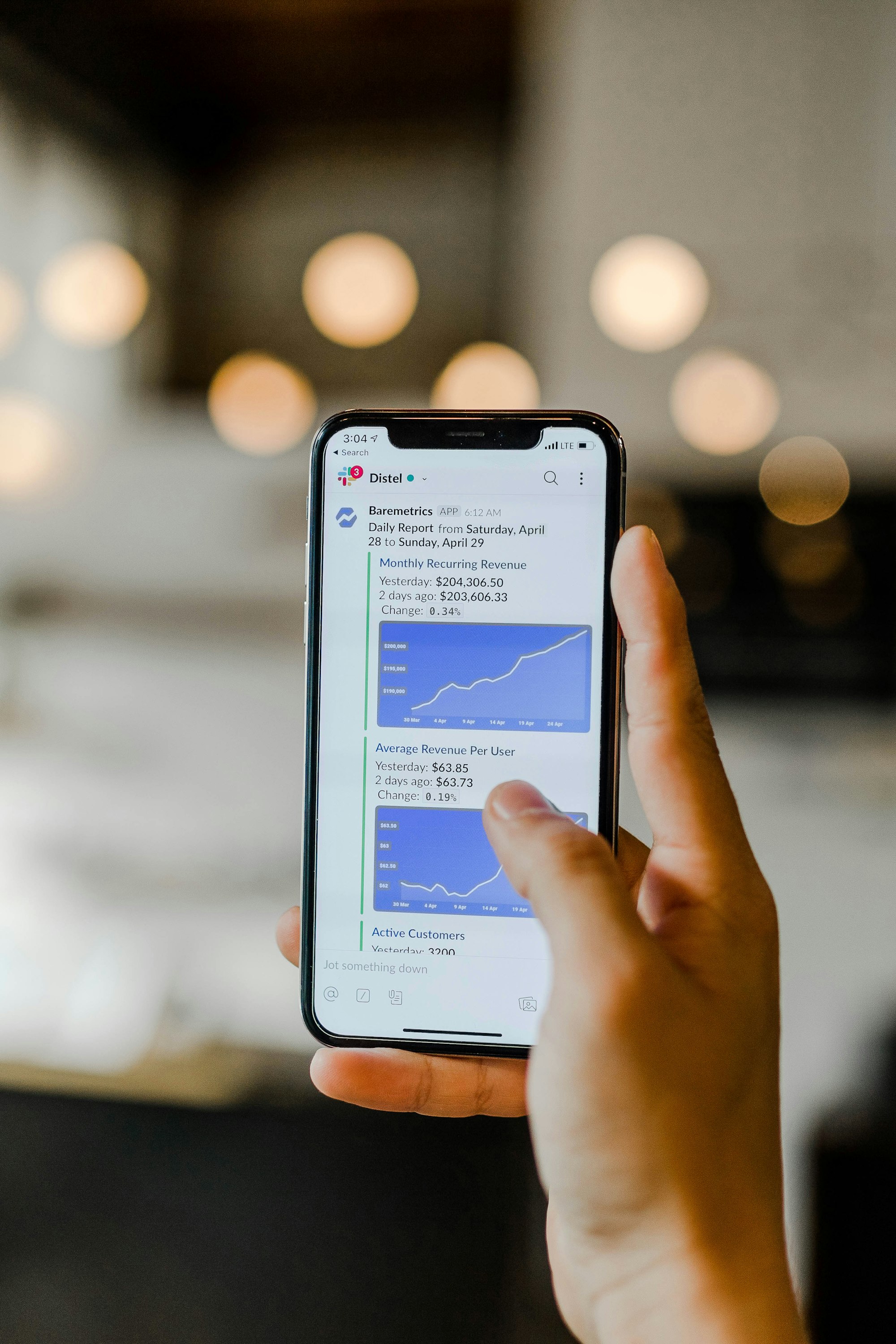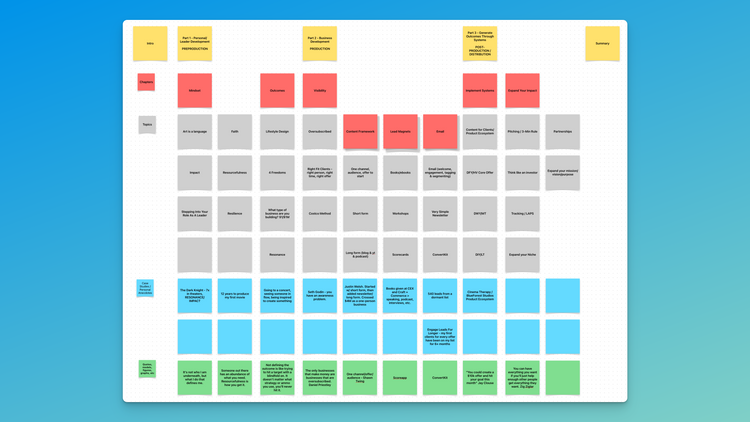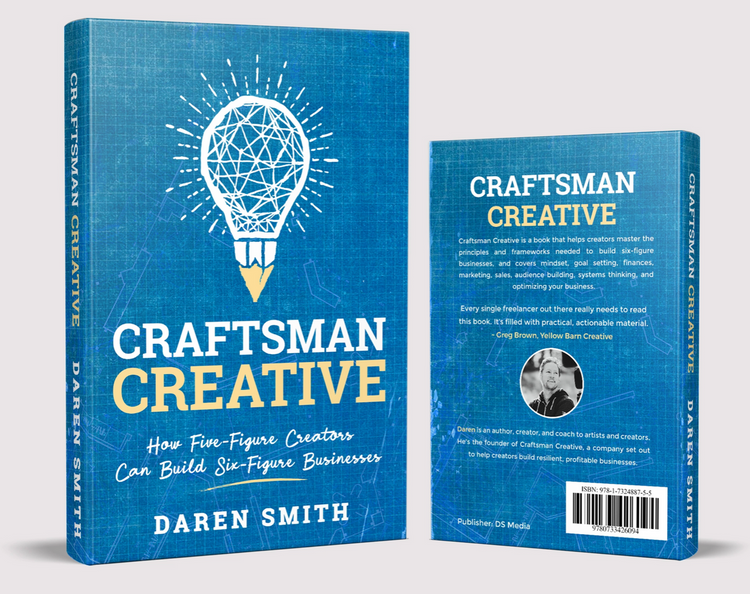Structure Deals Properly

In this chapter, we'll discuss a few ways to look at the way you structure deals in your business so that you can ensure profitability from the start.
Again, that is your goal. You want every deal possible to be profitable, but as you'll learn in this chapter, there are many ways to make that happen.
Understanding this aspect will help your financial mastery over your business and will help you become more profitable, more confident in the way you run your business, and help you become more resilient so that your business can exist for much longer.
Let's dive in!
Typical Deal Structure
This chapter is very much geared toward projects and services, much less about selling products. However, after understanding the sales ladder (explained in the sales section) you will know that every business should have both products and services, so don't skip this chapter because you think it's not for you.
Most freelancers, when structuring the deal for their services, will simply estimate how much time they expect the project to take, and multiply that by their current hourly rate.
So a 10-hour project at $50 per hour is a $500 project.
While its simplicity is helpful, it leaves a lot on the table, and doing projects like this over and over makes it harder to make room for the bigger projects that will grow your business.
There are many more ways to structure a deal to maximize profitability and therefore growth in your business.
A great resource for this is the book The Art of Profitability by Adrian Slywotzky, which outlines more than 20 different deal structures or "ways to get paid" that are different from the typical "time for dollars" structure mentioned above.
I want to offer two here that will expand your perspective and help you take the first step toward financial mastery.
Profit Based Deal Structure
This one is fairly straightforward and can be used in conjunction with the "standard" model, or in replacement of.
Whether you use it together or instead depends on your level of trust with the client that is hiring you.
Services businesses can thrive using a profit-based structure because it allows you to participate in the upside, position yourself as a partner, not a vendor, and grow your business substantially.
The first time I saw this model was with the Harmon Brothers, a commercial video company based in Provo Utah. They make viral video ads for companies and have helped their clients grow exponentially.
The structure looks like this - they get $XXX,XXX for the cost of creating and producing the video and purchasing the first X months of video ads on Facebook and other platforms.
But, they also get a percentage of sales that occur from their ads.
This hybrid model - not fully "time for dollars", not fully profit-based - allowed them to cover the downside and participate in the upside, and grow to an eight-figure-a-year business in record time.
I've personally gone to the extreme end of this model with Craftsman Creative. I pay out of pocket for the production costs for every new course on the site. The course partner brings their audience and helps market and sell the course online. We split the backend profits 50/50, so there is complete alignment and I only get paid if the courses sell and they make money.
Here are the behind-the-scenes numbers on just one of the courses.
If I had done the vendor/time-for-dollars model, I probably would have charged $3,000-$5,000 for a course. That includes no profit margin, no upside, but would cover my time ($1,000 per day for 3-5 days of work).
That model has a hard ceiling of $5,000.
But, because I structured the deal differently from the start, that single course partner has done over $25,000 in sales in 18 months, and with that 50/50 split, it means that I've made $12,500, 2-4x what I would have made using the "standard" model.
Yes, I took on more risk upfront, and yes, it took longer to make that $12,500 than it would have taken to make the $3,000-$5,000 upfront. But the upside is undeniable, and the upside continues today! I'll earn 50% of each course sale as long as it is on my site.
Here's how to implement this with your clients:
- Know your worth.
- Understand the potential upside
- Cover the downside to trade for upside
Know your worth
Understand how much value you are creating for your client. How many hours you're saving, how much expense they're saving by not doing it in-house, etc.
Understanding these points before you put a deal together will show them that you know the business and understand what you're bringing to the table.
Understand the potential upside
This requires that you spend some time thinking about the way your services will help your client make money.
Is the design going on their website? A marketing campaign?
Is your video for their youtube channel or as the hero video on their home page?
How will your photos be used?
If they are using the assets that you're creating for them to sell products, there is potentially a lot of upside, which you can participate in if you understand what's possible.
I made videos for a realtor at one point at $500 a pop, because I figured it would take about 5 hours of my time between filming and editing.
But at one point I realized that 6% of a $1,000,000 home is $60,000 (give or take) and that I was less than 1% of the realtor's income from that sale.
Had I structured it differently, I could have asked for a percentage of her revenue, rather than a flat, hourly fee.
Cover the downside to trade for upside
In certain situations, there are projects that require money up-front to cover costs. Video production is one of these - in order to produce a commercial, there are costs for labor, equipment, locations, food, insurance, and more.
Most video production companies ask the client to cover these costs by paying part of their budget up-front, sometimes as much as 50%.
What you could do instead is cover the production cost yourself and ask for a percentage of sales or equity in the company.
Sandwich Video famously structured their deals this way. They would cover the production costs in exchange for equity in the companies they were producing videos, companies like Slack, Warby Parker, Casper, Square, TikTok, and more.
Imagine the upside of owning parts of these billion-dollar companies. You can do the same - if on a smaller scale - by understanding your worth, the potential upside, and covering some of the downside to trade for upside.
Value-Based Deal Structure
The other structure to think of for service providers is to change your pricing for every deal because of one crucial insight.
Stop positioning yourself as a vendor, start positioning yourself as a partner.
Vendors sell commodities, things that can be haggled on price and found from dozens (hundreds?) of other vendors.
You don't want to be a vendor.
You want to be a partner.
Partners bring more than just services to the table. They themselves are a valuable asset to be working with.
Partners don't haggle on price. They understand the terms of the deal and find a fair structure that works for everyone involved. Everyone brings what they need to the table and everyone participates in the upside.
For Craftsman Creative, I bring my 15+ years of film & TV production to the table, as well as cover all the cost for production and editing, web design, marketing, and advertising, as well as proven frameworks for launching and selling courses.
The course partners I work with bring their talent, their experience, their content, and their audience.
The deal is structured as a 50/50 split on sales, 50 to the partner, 50 to Craftsman Creative. Of that 50, 20 goes to ongoing ad spend, and 30 is revenue for the business.
Perfect alignment stemming from positioning myself and my company as a partner not a vendor for hire.
Think about how you can do this for YOUR business. The thought exercise alone will open new doors, new structures, new ways of working with clients.
The important thing to remember is that you want to ensure profitability from the start with your deals.
You can work for free or at a loss for certain situations and clients in order to get more work in the future, but it's not a sustainable deal structure.
Do it strategically, not because you don't value yourself enough to charge more and have a profit margin.
In the next chapter, we'll dive deeper into the topic of profit margin, how to think about how much you need, and how to grow it over time.
NEXT CHAPTER >

< PREVIOUS CHAPTER








Member discussion